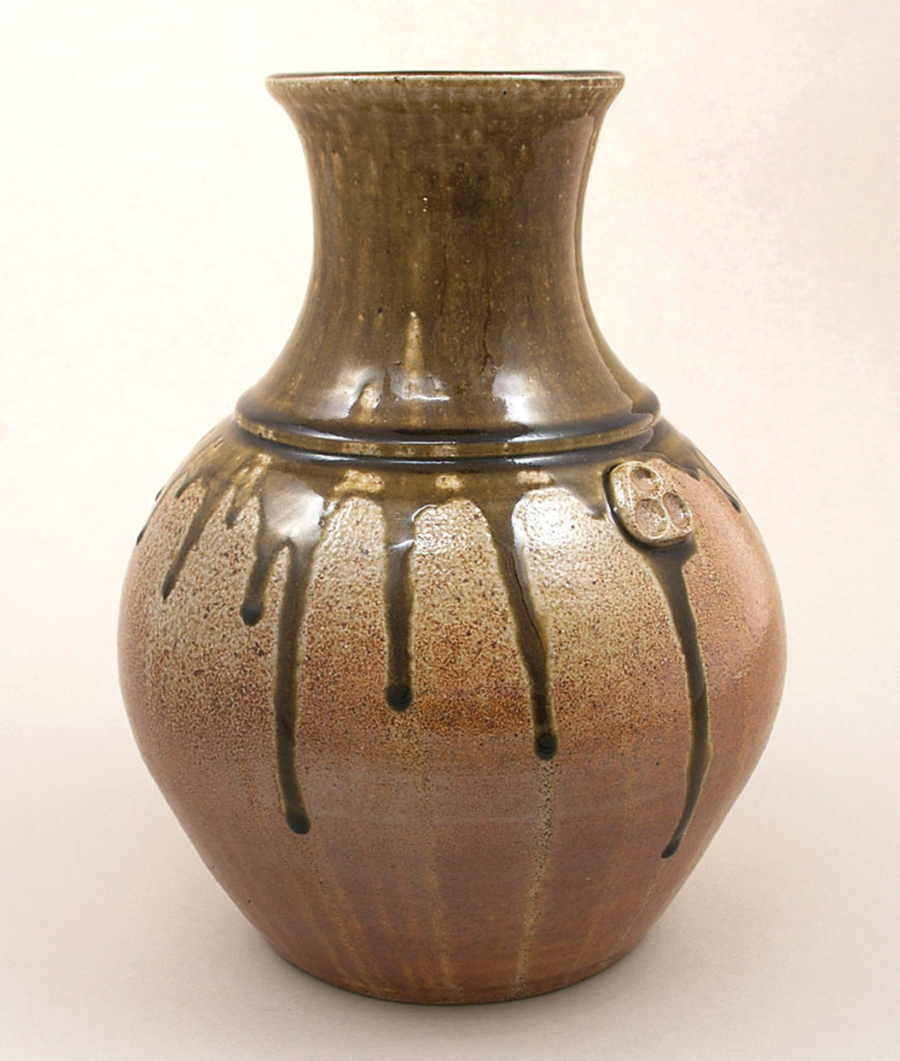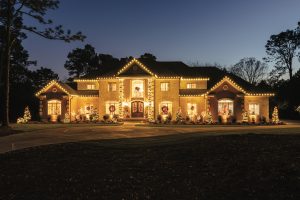
Turning fire and clay into works of art
By Ray Owen
Nestled in the northwest corner of Moore County in the early 1900s, Jacques and Juliana Busbee’s Jugtown Pottery elevated folk pottery into a broader appreciation of art and cultural heritage. A pair of Raleigh artists initially viewed as “foreigners,” the Busbees traveled the back roads of Moore and Randolph counties like old-time politicians, introducing themselves and their goals while learning about pottery from those who made it. They collected traditional wares and studied folkways, lived among the country folks and wove themselves into the culture with dignity and personal warmth. The Busbees cared deeply about the plight of the potters, their long history and struggles.
Utilizing local materials and old-time turning and firing techniques, their own pottery provided a kind of visual nourishment that proved as timeless as its classical inspiration, and became the foundation for traditional pottery of the 20th century in North Carolina. The great gift of the Busbees’ revival was their aesthetically pleasing ware, a fusion of traditional and Oriental ceramic forms created under the watchful eye of Jacques Busbee. They found not only a new direction for the North Carolina pottery trade, propelling their community into the future, but also a means of sustaining a way of life for the Owen/Owens family of potters. And the couple grew to be the leading advocates for the trade.

The Busbees accomplished this transformation by cultivating a wider audience for folk pottery and, in turn, the Seagrove area came to embrace the Busbees as their own. This symbiosis proved not only important for marketing pots but for defining the identity of the potters themselves, helping to foster the survival of a craft that in most other areas had passed into the ages.
The arrival of the Busbees marks the turning point for a region that was looking to reinvent itself at the end of the era of the salt-glazed jug. While the locals saw pottery as another cash crop, Jacques and Juliana thought of it as something to be celebrated for its beauty. Their outsider’s perspective offered a broader view for the symbols of handmade pots and rural society, and over time the district’s residents began to see themselves through this lens. The old pug mill with the mule, and the treadle wheel and groundhog kiln, came to have new meaning and a source of community pride.
This vision of a new pottery that could breathe life into handmade craft would have been nothing without the willing hands of the potters. The craftsmen were ripe for engagement and served as the co-creators of Jacques and Juliana’s artistic undertaking. It should be noted that gifted craftsmen open to innovation were viewed as exceptional, or “different,” not unlike the early perception of the Busbees, whose pieces were at first described as “play” or “toy” ware. This view of the innovative potters’ exceptionalism likely resulted from their involvement with the newcomers in southern Moore County who where influencing their style and taste.

In the early years of the 20th century, Southern Pines and Pinehurst provided a market for pottery from the northern end of the county. The potters streamed into the settlements on schooner wagons with loads of utilitarian ware, only to find worldly resort dwellers more interested in urns, jars and teapots. The townsfolk began showing the tradesmen drawings and examples of the pieces they were willing to buy, compliant craftsmen began turning out new shapes, and sightseers began visiting their shops.
A new way for the potters was also provided by arts enthusiast Neva Burgess, who at the start of the 1900s began promoting regional arts and crafts at Lift-the-Latch Tearoom in the southern Moore County town of Pinebluff. This early sales outlet for traditional pottery offered lectures and exhibitions, set in a self-consciously rustic log cabin reminiscent of Jugtown. For several years prior to the Busbees’ arrival, potters were invited to give public demonstrations and to exhibit at the Sandhills Fair in Pinehurst, paving the way for their venture.
Jugtown represents a convergence of people who joined together with a common creative goal to make something successful happen. Beyond nourishing the pottery tradition, the key to understanding the Busbees’ vision is its connection through the generations. Sustained by teaching and sharing, such a lineage is a fragile thing, lost forever if the chain is broken. With a heritage so rich, perhaps all those who have followed in the Busbees’ footsteps have felt that nurturing the tradition was tied to a sense of being part of something greater than themselves, and that those before them kept the tradition alive under much harder circumstances.


Since 1983, Jugtown has been owned and operated by potters Vernon and Pam Owens, and their family. Vernon began turning pots at Jugtown in 1960, and his grandfather, J.H. Owen, was the first potter to successfully partner with the Busbees. Through the years, the pottery complex has remained basically unchanged, and the Owenses have carefully restored and preserved the facility. Most remarkably, in a time when almost all traditional pottery buildings have disappeared, Vernon still turns pots in the original turning room, completely unchanged from when it was built, with a dirt floor and bare log walls.
Like the Busbees before them, the Owenses produce a hybrid of traditional and classic forms, ever careful in their transformation from old to new traditions. Older pots from the region remain an inspiration, just as Jacques and Juliana had envisioned. Decorative motifs reflect the natural world and agrarian setting, with incised sine waves, farm animals, and birds being common themes. The vessels carry evidence of the fire and earth from which they were made — some slick like clay, others rough and volcanic, and others with slight finger grooves from the hands of their creator.
In some regards, the cares and concerns of today are not so different from the early 20th century — machines continue to replace people, as social upheaval and change persist — but Jugtown holds the same allure as when it was founded. In a 1991 interview conducted with Vernon Owens, reflecting on life at Jugtown, he said, “The more automated and the more things are done by a computer, the more important it is that this place, and any other place like this, stay the same. What you’re doing, you’re going back to a time when time didn’t matter that much, and that’s one of the things that draws people to a place like this.”


With its picturesque setting, Jugtown is the best-preserved pottery in the eastern Piedmont and one of the most significant traditional potteries in America. The complex consists of 12 rustic log cabins that blend seamlessly into the surrounding farmscape. The property embodies the Busbees’ belief in the civilizing influence of rural society, a throwback to a place closed off from the outside world where they had everything to do for themselves. The effect is one of being deep-rooted and unchanged over time, reflective of the values of thrift, modesty, plain-style tastes and homespun ways.
When you pass through the gates you encounter a cultural landscape, with a visceral, almost instinctive alignment with the past. There are those who have said it is haunted, that sometimes in the quiet of the old Busbee house you can hear the muffled sound of music drifting through the air. Stories of this apparition pre-date the current owners, with reports of the phenomena spanning decades. Whether or not one believes such accounts, the telling and retelling of these stories gives them a certain degree of life and meaning.

Jugtown is, and always has been, a shared experience. The Busbees’ vision permeates the site, and its distinctive and cherished aspects are as real to its residents and their patrons as its physical characteristics. It is a feeling that surrounds them and is held within, connecting with the invisible fabric of life. PS
(Adapted from The Busbee Vision, with permission from the N.C. Pottery Center.)
The Arts Council of Moore County will present the exhibit, Jugtown Pottery: A Century of Art & Craft in Clay, at Campbell House Galleries from June 2-30, 2017. The show also features jewelry by Jennie Keatts of JLK Jewelry and photographs by Angela Walker. The exhibit is free and open to the public on weekdays 9 a.m. to 5 p.m. and on Saturday, June 17, 2 p.m. to 4p.m.
During the month of June, two free Jugtown events will be presented at the Southern Pines Civic Club at 105 S. Ashe St. in Southern Pines. On Sunday, June 11 at 7 p.m., the PBS film, Craft in America/Jugtown Pottery will be screened, followed by a panel discussion with Jugtown artists. And, Steve Compton, author of Jugtown Pottery 1917-2017: A Century of Art & Craft in Clay, will give a talk on Wednesday, June 14 at 7 p.m.





